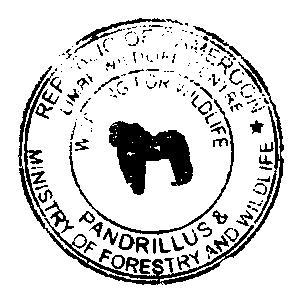
3 minute read
Foreword

Foreword
Advertisement
Dear Friends and Supporters, Last month saw our immense pride in completing the construction of the first African grey parrot rehabilitation aviary in Cameroon. This month the focus again was on this magnificent endangered bird, unfortunately not with such a positive note. In the past few months, the Limbe Wildlife Centre has been at the forefront of the conservation efforts to secure the survival of the African grey parrots, one of the most endangered and emblematic species of the Central African region. The survival of the African grey parrots, like other endangered species, is threatened by the rapid destruction of forest habitats, poaching and illegal trafficking. The illegality of such activitiesis unfortunately insufficient to deter criminals. It is critical that the law is effectively enforced, and that wildlife crime is deterred and combatted. On 3 December, the Limbe Wildlife Centre (LWC) rescued 84 endangered African grey parrots. The birds, along with a large bag filled with over 100 kilograms of pangolin scales, were seized by military forces (BIR) in Bakassi where they were being shipped to Nigeria. The parrots were crammed into two small and dirty wooden boxes in which they could barely stand and move around. They arrived at the LWC in a state of distress resulting from starvation and dehydration, as well as their severe, prolonged overcrowding. The rescued birds arrived in terrible condition and required a great deal of specialist care. The feathers were cut by the poachers, preventing them from flying. It is essential for the parrots that these feathers grow back. Each bird then faces the challenge of learning to fly again before they can be released, healthy and in a safe place(p.14- 17). This confiscation underlines the unfortunate truth that despite further international and national regulations, poachers and traffickers continue to trade the species and to feed illegal pet markets. Despite increasing conservation and educational effort by the LWC, African grey parrots are not safe and their populations still highly threatened. Nevertheless, I would like to congratulate the Rapid Intervention Battalion (Bataillon d’Intervention Rapide, BIR) for their intervention and saving these amazing birds. However, the amount of pangolin scales confiscated is alarming and a disaster for the species. As is becoming increasingly apparent, pangolins are the most threatened mammals in the world. Protecting wildlife is
a national effort, and I am glad to see that the Ministry of Defence is also showing full participation in this fight against wildlife crime alongside the Ministry of Forestry and Wildlife. These seizures serve as a grave reminder of the huge task ahead of all of us to ensure a future for nature inCameroon.
Now, the LWC will be in crucial need of more financial and politico-administrative support to ensure the survival of the parrots. Fortunately, we are glad that a large number bird specialists and experienced vets are willing to help and advise our team on the ground. Despite a long history saving African grey parrots, we always need to identify areas of improvement in the hopes of progress. We take this responsibility very seriously, and acknowledge our role as the national rescue and rehabilitation centre for the Endangered African grey parrots.
As well as the rescue and care required for the African grey parrots, our vet team was on the front line dealing with two major medical cases in Mandrills (p. 14-15). Further, our animal care team successfully underwent two social rehabilitation procedures. Firstly for Coco and Leonie (Patas monkeys), who
integrated into the savannah dwelling group in the large enclosure(p.16 & 18). Secondly, for J.K. (Mona monkey) who, despite his handicap, happily integrated into his new group (p. 16 & 18). Malende (Tantalus monkey) was also finally transferred to his new enclosure(p.14).
The Education department continued to improve its activities. This month several different programs served to connect children with bats, penguins, African grey parrots and elephants during the Saturday Nature Club(p.12-13).
Finally, we are pleased to have started several new activitiesthis month. These have been implemented with the goal of helping us improve our standard procedures for rehabilitating the Endangered African grey parrots; for integrating Endangered Chimpanzee Chinoise to the Mainland group (p.15 &17)and reorganizing results of the haematological analysis made during health checks of the Endangered Drills in order to better address medical cases(p.19).
Thank you as always for your unfailing support,
With very best wishes,
Limbe, 30 November 2019


Guillaume LE FLOHIC LWC Manager, Pandrillus Foundation


